Ever since The Great Train Robbery in 1903, Western films have been captivating audiences fascinated with the Wild West and Frontier life. While traditional American titles depicted that era from a romanticized point of view, blending moral heroes, damsels in distress, and lush scenery, the Spaghetti subgenre took a more brutal and less censored approach, presenting morally gray characters and intense violence. No matter their preference, viewers have watched those movies with excitement and witnessed many satisfying showdowns.
To grab them from the very beginning, though, some filmmakers have also crafted equally interesting opening scenes or sequences. Whether in complete silence or with meaningful dialogue, in a desolate place or a crowded area, under the credit titles or right afterward, over a melancholic ballad or quirky leitmotif sounds, in the harsh midday sun or in colder weather, the following intros cleverly set the ambiance and present the lead characters.
Here is how 10 of the greatest Westerns ever made begin.
10 High Noon (1952)
Directed by Fred Zinnemann, High Noon stars Gary Cooper as the soon-to-be-retired Marshal Will Kane, Grace Kelly as his bride Amy, and Ian MacDonald as the newly released prisoner Frank Miller. The story unfolds in real time, and the first scene, which starts under the opening titles, follows Miller’s three acolytes, Jack (Lee Van Cleef), Ben (Chev Woolley), and Jim (Robert Wilke), as they arrive one by one and meet in a serene, quiet field. Then, they ride together into town to wait for Miller’s arrival on the noon train. The viewer can already tell the posse is up to no good, and the silent tension and anticipation are well accompanied by Dimitri Tiomkin’s award-winning ballad.
9 Rio Bravo (1959)
Rio Bravo is produced and directed by Howard Hawks and stars John Wayne as Sheriff John Chance, Claude Akins as the spoiled and wealthy Joe Burdette, and Dean Martin as the town drunk Dude. The film opens with Dude walking into a saloon, obviously thirsty and short on cash. Joe is at the bar and catches him looking at this bottle of whiskey with envy. He pours a glass and raises it to him, but when Dude’s face lights up, he smirks and throws a coin into the spittoon next to him. As Dude is bending over to pick the money up, John appears and kicks the spittoon away. Dude then knocks him down with a bat and tries to do the same to Joe, but the other patrons stop him. After Joe punches Dude in the stomach, a man tries to hold him back, but he shoots him, then leaves the saloon with a triumphant smile. The viewer is now eager to find out how the plot will unfold.
8 A Sky Full of Stars for a Roof (1968)
Directed by Giulio Petroni, A Sky Full of Stars for a Roof stars Giuliano Gemma as Billy Boy/Tim and Federico Boido AKA Rick Boyd as Roger Pratt. In the movie’s cold opening, Roger and his posse, who are looking for Billy, stop a traveling coach in the middle of nowhere and murder the driver and the passengers, a priest and a lady, in cold blood.
Roger: Where is he? For her, we had to waste the whole day?
Informant: I heard Billy was supposed to be coming this way. He must have been taking the trail west.
Roger: That may be, but we ain’t taking you along.
Roger then shoots him, and they all ride away, leaving all the bodies on the ground.
7 Hang 'Em High (1968)
The revisionist Western Hang 'Em High, directed by Ted Post and produced by Clint Eastwood’s The Malpaso Company, stars the latter as Jed Cooper, a rancher who is lynched by Captain Wilson (Ed Begley) and his men, after they wrongfully accuse him of being a cattle thief and a murderer. The film opens on Cooper leading his cattle across a river. As he is gently helping a scared calf, Wilson’s posse ride along and surround him, make their unfounded accusations, brutalize him, shoot him, hang him from a tree, steal his wallet, and leave him for dead. What they don’t know is that they haven’t succeeded in killing him, and that he’ll soon recover and go after them.
6 The Searchers (1956)
Based on the novel of the same name by Alan Le May, John Ford’s The Searchers features John Wayne as Ethan Edwards, a Civil War veteran, Natalie Wood as his abducted niece Debbie, and Jeffrey Hunter as his adopted nephew Martin. After years of absence, Ethan returns to his brother Aaron’s home, which he shares with his wife, Martha, their children Lucy, Debbie, and Ben, and their dog. The first scene takes place on the Edwards’ porch, where the family is gathering to watch a rider approaching, in disbelief. Their reactions vary between anxiety, to longing, hesitation, and excitement. So much is said in their facial expressions alone, in less than 100 seconds, leaving the audiences wondering whether Ethan and Martha used to be romantically involved.
Though obviously complicated, the warmth of the hearth is beautifully captured there, which makes the story’s future dark events all the more poignant.
5 The Great Silence (1968)
Westerns are often set in lush plains, rugged canyons and deserts, or small towns under a scorching sun. From the get-go, Sergio Corbucci’s The Great Silence breaks the mold because the story takes place during a blizzard. The movie opens with the pale emptiness of snow, contrasting with tall, dark trees. There is a lonely rider, but he’s just a vague silhouette in the desolate backdrop of the predominantly white landscape. Following close-ups of several bounty hunters observing him discretely from afar, the camera slowly zooms in on the rider, revealing the actor Jean-Louis Trintignant, who stars as the vengeful mute gunslinger Silence.
A flock of birds suddenly breaks the silence and covers the sky, and this signals the start of the action. Now in full close-up, Silence seems aware of the danger, as he closely scans the area. The intensity builds, as he slowly reaches for his Mauser C96, and the swift shootout that follows ends with him winning. The blood of the men staining the snow symbolizes the brutal violence that characterizes all Spaghetti Westerns. The bleak mood is now set.
4 For a Few Dollars More (1965)
For a Few Dollars More is Sergio Leone’s second installment in the so-called Dollars trilogy, and it stars Clint Eastwood as the bounty hunter Manco, Lee Van Cleef as the vengeful Colonel Douglas Mortimer, and Gian Maria Volonte as the outlaw El Indio.
After an extreme wide shot of someone getting gunned down in the middle of nowhere, which runs under the entire opening titles and Ennio Morricone’s distinctive score, the first scene is set aboard a train. A curious passenger is observing a man hiding his face behind a bible. When the ticket inspector comes by, the voice of the mysterious man asks him if the town of Tucumcari is still far, to which he replies “three to four minutes.” The other passenger intrudes and informs the “reverend” that this train does not stop at Tucumcari. The latter lowers the book, and the audience sees Van Cleef’s iconic menacing squint. “This train will stop at Tucumcari,” he declares, before getting up and pulling the emergency cord. The conductor stops the train, and as the inspector starts protesting, Mortimer shows him his gun, thanks him, and leaves with his horse. The viewer is intrigued by this determined, intimidating, and polite character.
3 Butch Cassidy and The Sundance Kid (1969)
Directed by George Roy Hill and written by William Goldman, Butch Cassidy and the Sundance Kid is inspired by the infamous criminals Robert LeRoy Parker AKA Butch Cassidy (Paul Newman) and Harry Longabaugh AKA Sundance Kid (Robert Redford), who committed several train robberies.
“Most of what follows is true.” These are the words that follow the opening credits, which feature a sepia-toned “newsreel” of the two outlaws committing robbing a train. The sepia shots continue full-screen, half sun-drenched, half-dark, with expressive close-ups of Newman getting into a bank and studying the clock, the alarm bell, and the teller closing his window and putting the money way. A gunshot breaks the silence. But it is an illusion; just a security guy violently slamming every door and lock. “What happened to the old bank? It was beautiful!” says Cassidy as he is about to exit the bank. To which the employee replies, “People kept robbing it.” “A small price to pay for beauty,” retorts Newman as he leaves, and the door is slammed behind him.
No wonder Conrad Hall received the Academy Award for Best Cinematography, while Hill won Best Film and Best Direction at the British Academy Film Awards.
2 Django (1966)
“Django, have you always been alone?
Django, have you never loved again?
Love will live on.
Life must go on.
For you cannot spend your life regretting.”
Directed and co-written by Sergio Corbucci, Django features Franco Nero in his breakthrough role, José Bódalo as General Hugo Rodríguez, and Loredana Nusciak as María. It starts with various back shots of the titular character slowly and painstakingly dragging a coffin behind him in the mud, which, as the audience will later find out, contains a machine gun. He is not clearly seen yet. Emphasized by Luis Bacalov’s title song, Django’s minimalist and highly intriguing intro symbolizes the character’s lonely and harsh life.
This brutal and political Spaghetti Western was so popular that it would spawn dozens of unofficial sequels over the years.
1 Once Upon a Time in the West (1968)
The over 10-minute-long, mostly silent opening sequence of Leone’s Once Upon a Time in the West is an iconic cinematic masterpiece; it was filmed in four days in Spain, and it showcases the dramatic and tense arrival of the gunslingers Stony (Woody Strode), Snaky (Jack Elam), and Knuckles (Al Mulock) at a remote train station. After neutralizing the area, they begin their interminable wait. No detail is spared to illustrate their focus: cracked knuckles, an annoying fly, a squeaky windmill, jangling spurs, water drips… This false nonchalance in the scorching heat is brutally interrupted by a train’s noisy and smoky arrival, which coincides with Leone’s credit. The audience and the men emerge from their haze, as they hear a disturbing harmonica tune, and a passenger appears: it’s Harmonica (Charles Bronson). After the latter tells them they’ve brought “two too many” horses, he guns them down. All this tense build-up is destroyed in an instant.
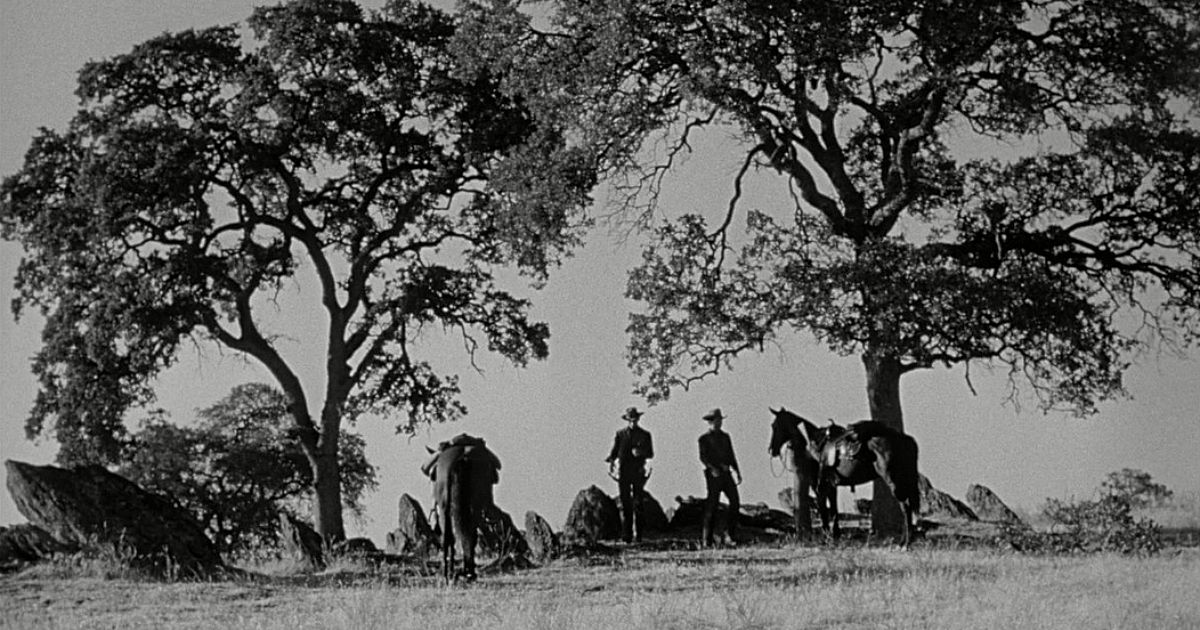

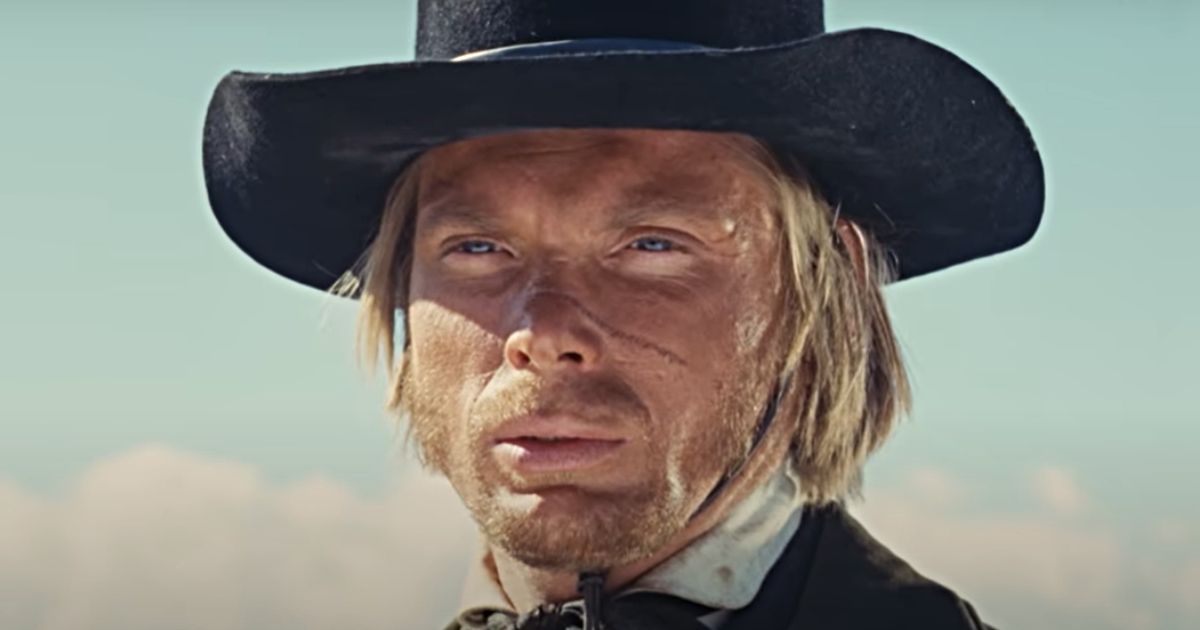

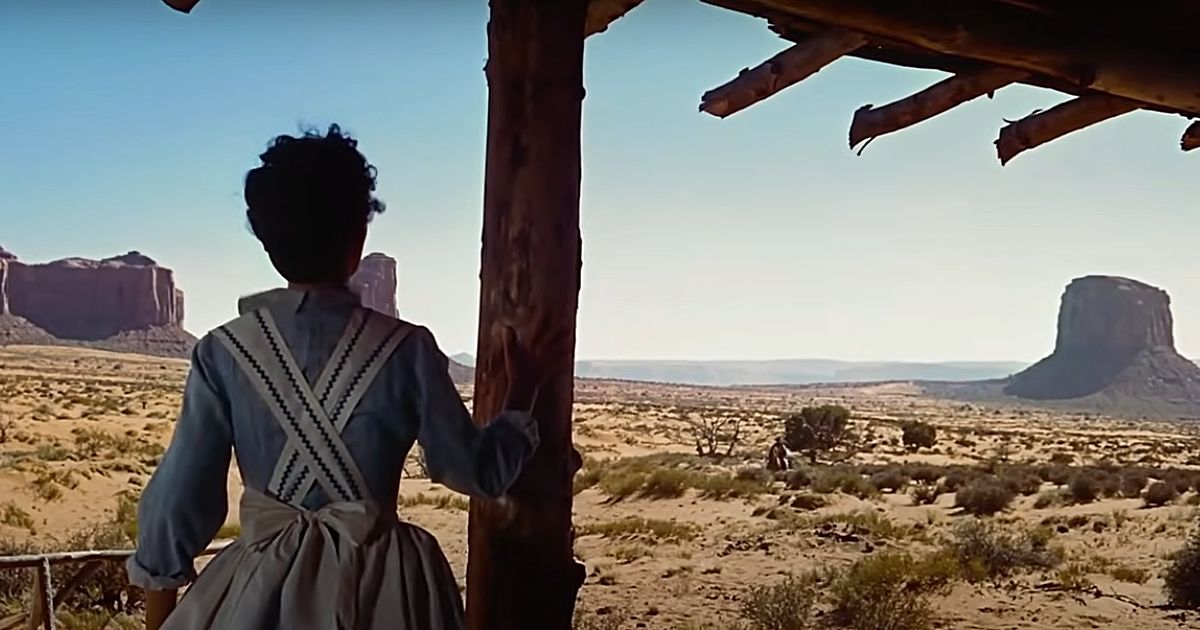



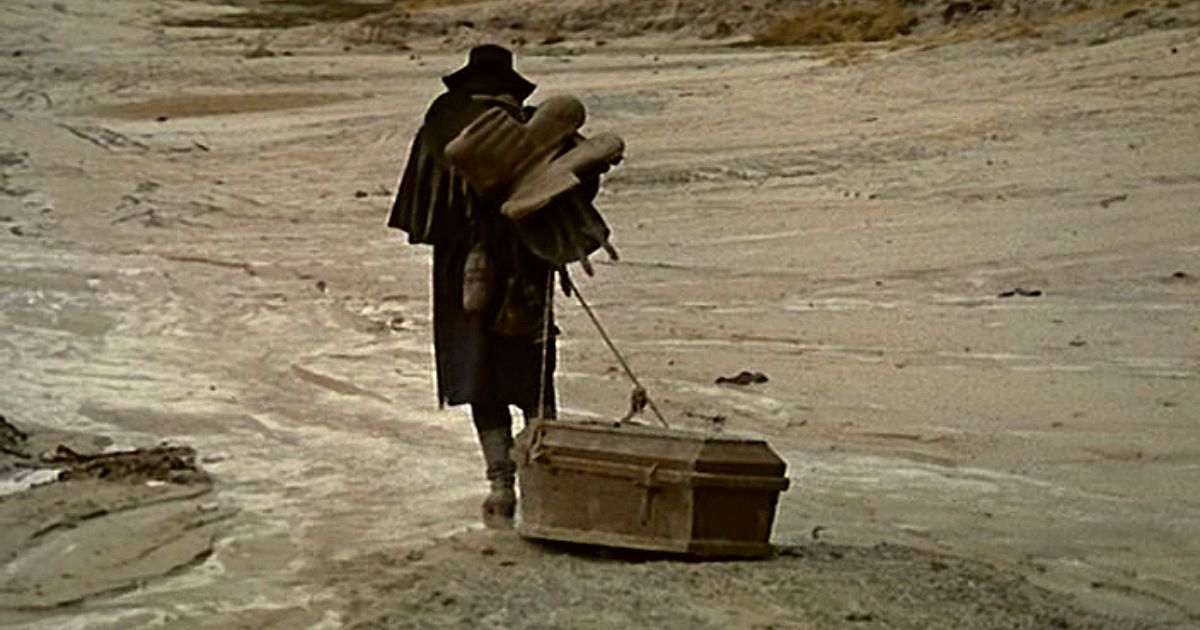
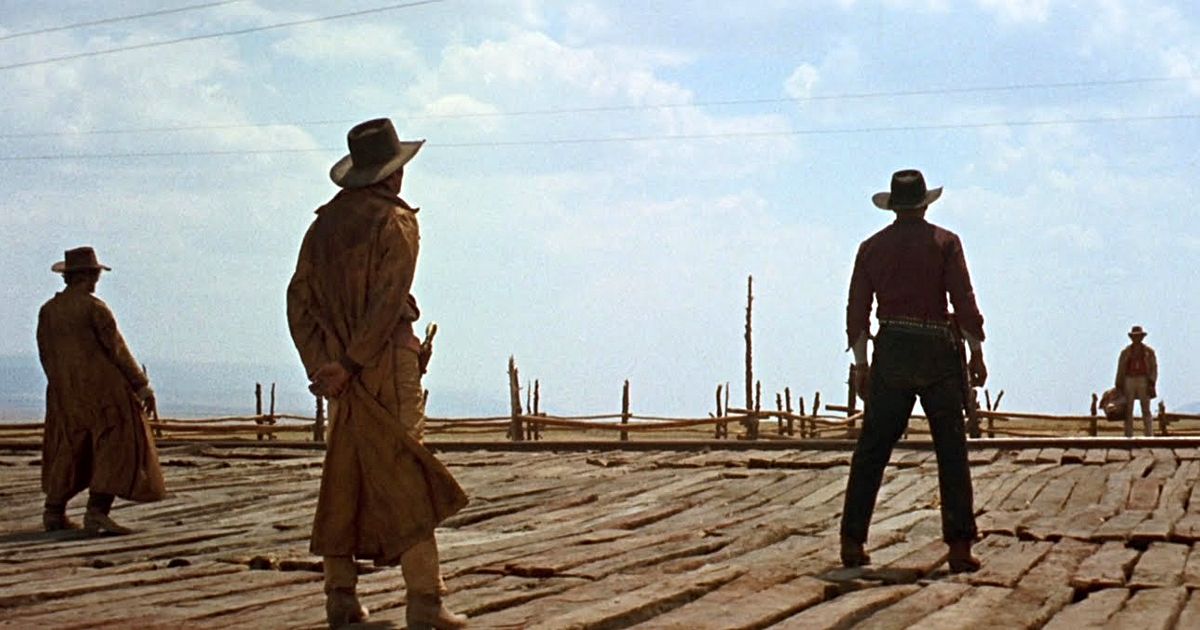
Comments
Post a Comment